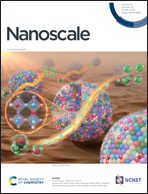Computational hyperspectral devices based on quasi-random metasurface supercells†
Abstract
Computational hyperspectral devices that use artificial filters have shown promise as compact spectral devices. However, the current designs are restricted by limited types and geometric parameters of unit cells, resulting in a high cross-correlation between the transmission spectra. This limitation prevents the fulfillment of the requirement for compressed-sensing-based spectral reconstruction. To address this challenge, we proposed and simulated a novel design for computational hyperspectral devices based on quasi-random metasurface supercells. The size of the quasi-random metasurface supercell was extended above the wavelength, which enables the exploration of a larger variety of symmetrical supercell structures. Consequently, more quasi-random supercells with lower polarization sensitivity and their spectra with low cross-correlation were obtained. Devices for narrowband spectral reconstruction and broadband hyperspectral single-shot imaging were designed and fabricated. Combined with the genetic algorithm with compressed sensing, the narrowband spectral reconstruction device reconstructs the complex narrowband hyperspectral signal with 6 nm spectral resolution and ultralow errors. The broadband hyperspectral device reconstructs a broadband hyperspectral image (λ/λ ∼ 0.001) with a high average signal fidelity of 92%. This device has the potential to be integrated into a complementary metal–oxide–semiconductor (CMOS) chip for single-shot imaging.



 Please wait while we load your content...
Please wait while we load your content...